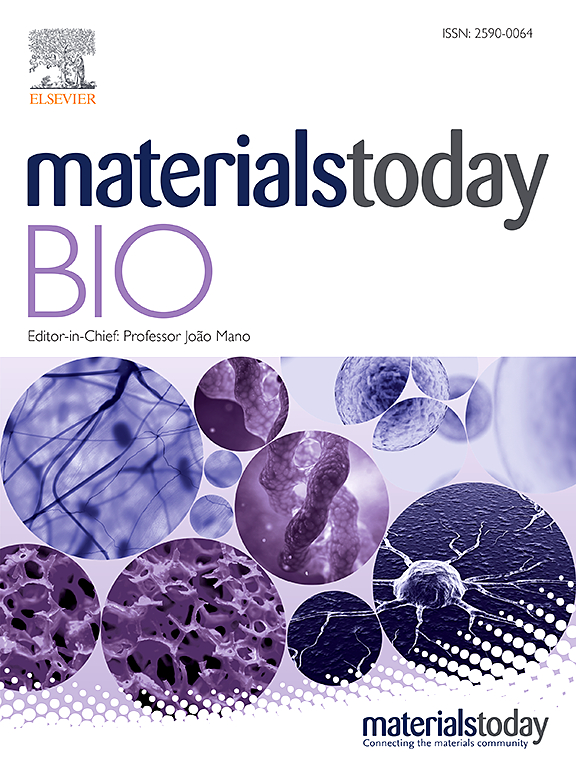Bioactive multifunctional hydrogels accelerate burn wound healing via M2 macrophage-polarization, antioxidant and anti-inflammatory
IF 8.7
1区 医学
Q1 ENGINEERING, BIOMEDICAL
引用次数: 0
Abstract
Globally, more than 300,000 fatalities occur from burns annually, and burn-wound healing continues to present significant challenges owing to the wound's propensity for infections, heavy bleeding, poor angiogenesis, and persistent inflammatory responses. The immunomodulation of macrophage polarization toward the M2 phenotype facilitates the healing of burn wounds by controlling the tissue microenvironment and expediting the transition from the inflammatory phase to proliferation. Here, a polydopamine-mediated graphene oxide (GA), tannic acid (TA), and magnesium ion (Mg2+)-incorporated multifunctional gelatin (Gel) scaffold (GTMG) is developed to accelerate wound healing by modulating the inflammatory microenvironment of burn wounds. GA and Mg2+ confer the scaffold with the conversion of M1-type to M2-type macrophages and vascular regeneration. TA and GA synergistically provide with antimicrobial capabilities to the hydrogel. Additionally, the multifunctional hydrogel shows strong hemostatic, anti-inflammatory and biocompatible properties. Due to its strong tissue adhesion and injectability, the hydrogel can also be used for various forms of dynamic burn wounds. In vivo research shows that the hydrogel may have hemostatic, anti-inflammatory, and M2-phenotypic macrophage-polarization effects, which increase the regeneration and repair effects of burn sites and shorten the burn-healing time. The results indicate that this multifunctional hydrogel offers a promising therapeutic approach for the treatment of burn wounds by altering the immunological microenvironment and accelerating the three phases of wound healing.

求助全文
约1分钟内获得全文
求助全文
来源期刊

Materials Today Bio
Multiple-
CiteScore
8.30
自引率
4.90%
发文量
303
审稿时长
30 days
期刊介绍:
Materials Today Bio is a multidisciplinary journal that specializes in the intersection between biology and materials science, chemistry, physics, engineering, and medicine. It covers various aspects such as the design and assembly of new structures, their interaction with biological systems, functionalization, bioimaging, therapies, and diagnostics in healthcare. The journal aims to showcase the most significant advancements and discoveries in this field. As part of the Materials Today family, Materials Today Bio provides rigorous peer review, quick decision-making, and high visibility for authors. It is indexed in Scopus, PubMed Central, Emerging Sources, Citation Index (ESCI), and Directory of Open Access Journals (DOAJ).
 求助内容:
求助内容: 应助结果提醒方式:
应助结果提醒方式:


